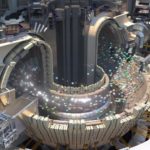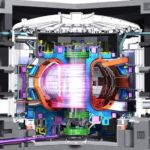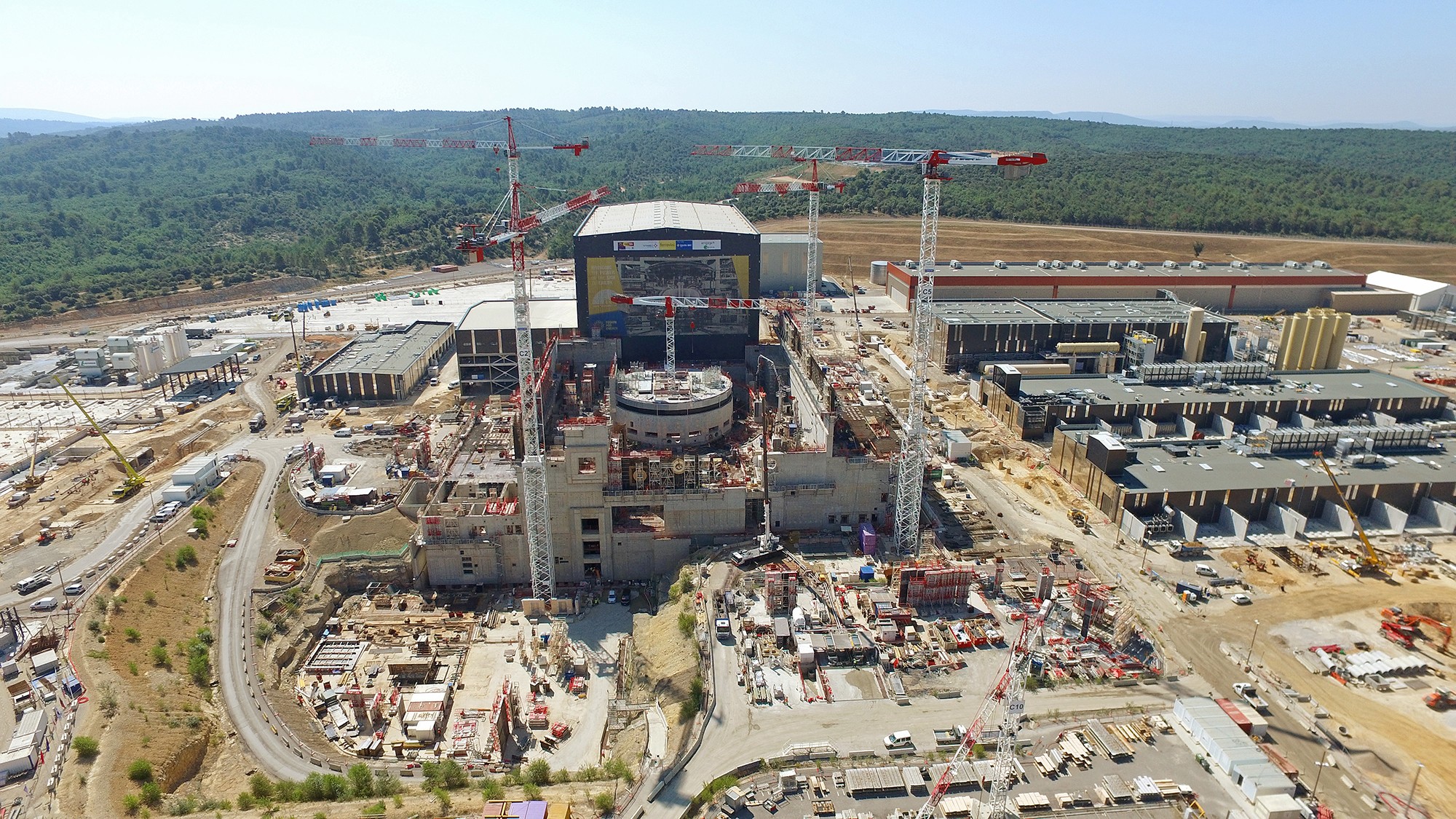
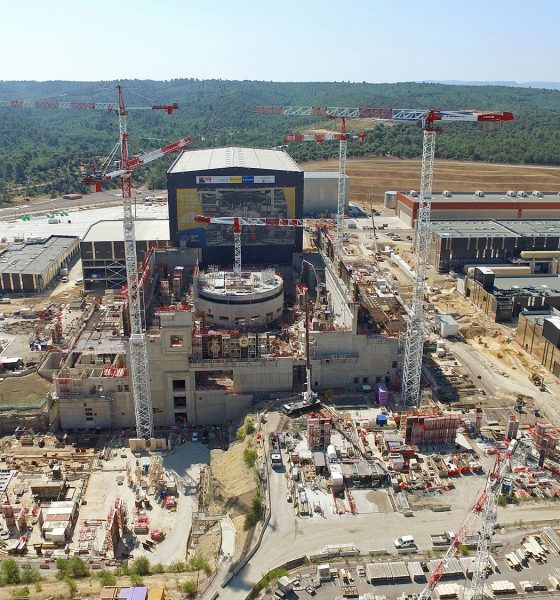
News
Advancement in nuclear fusion tech continues transition to clean energy future
The development of unlimited, carbon-neutral, and safe energy through nuclear fusion is expanding around the world, and scientists at the Atomic Energy Authority in the United Kingdom (AEA) have recently cleared one more key hurdle to making it a commercial reality: exhausting gas that’s hotter than the Sun. The hot plasma created during fusion power generation needs to cool down as it’s being used, but at its extreme temperatures, there aren’t any materials available to withstand the heat. Now, that problem appears to have been solved.
The AEA team’s answer to the heat issue is a “sacrificial wall” design which will require replacement every few years. Plasma will be moved down a path within its fusion generator’s holding device to cool it slightly before coming into contact with a specially designed wall for the remainder of the cooling process. However, even at a lower temperature, the heat will degrade the wall’s integrity over time and need to be changed. With the first nuclear fusion reactor set to turn on in seven years, AEA’s fusion exhaust system may be one of the developments that keeps it on schedule.
It’s said that imitation is the sincerest form of flattery, and recent fusion energy developments show that sentiment’s considerations don’t remain within the bounds of Earth. At about 90 million miles away, our Sun is essentially a fusion reactor in the sky, its large size creating enough gravity to force atoms together at its core and release massive amounts of energy. Artificially reproducing the conditions needed for this kind of generation is tough, but the attempt has been going on since the 1960s. The AEA is representative of one agency in a global endeavor.
The most advanced nuclear fusion project today is ITER, the International Nuclear Fusion Research experimental reactor in southern France, which hosts scientists from 35 countries dedicated to achieving the first ever positive fusion energy production. Their device is called a “tokamak”, and its structure is something like a flattened donut (torus) encapsulated by rings of powerful magnetic coils. The magnetic fields generated by the coils both suspend the plasma created by extreme heat and squeeze the plasma into a small space to create the fusion reactions. ITER is scheduled to turn its reactor on in 2025.
- A visualization of the ITER tokamak in operation.| Credit: ITER.org/Jamison Daniel, Oak Ridge Leadership Computing Facility
- A computer-animated visualization of the ITER tokamak in operation. | Credit: ITER.org
Creating fusion in a laboratory involves two primary parts: 1) creating plasma, a soup of electrons and nuclei released from their atomic structures due to extremely high temperatures; and 2) merging the nuclei of two different types of atoms, generally different forms of hydrogen. The heat in a tokamak is generated from both the magnetic field movement and external heating devices, and the nuclei merge is achieved by squeezing the plasma using those same magnetic fields into a constricted area to encourage collisions. Essentially, the high heat excites the atomic particles, speeding their motion, and their energetic movements within the magnetically confined area significantly increases the likelihood the nuclei will crash and fuse together. When this fusion occurs, a massive amount of energy is released, the object of desire for all involved in this field of research.
The amount of heat needed to convince atoms to release their electrons and form plasma is in the range of millions of degrees Celsius, the core of the Sun itself being 15 million degrees. Without high gravity to aid with squeezing plasma, as in the Sun’s case at 27 times the gravity of Earth, reactors on our planet need to heat well beyond the Sun’s temperature to ensure the atomic particles in the plasma collide and fuse. ITER’s tokamak heats to 100 million degrees Celsius.
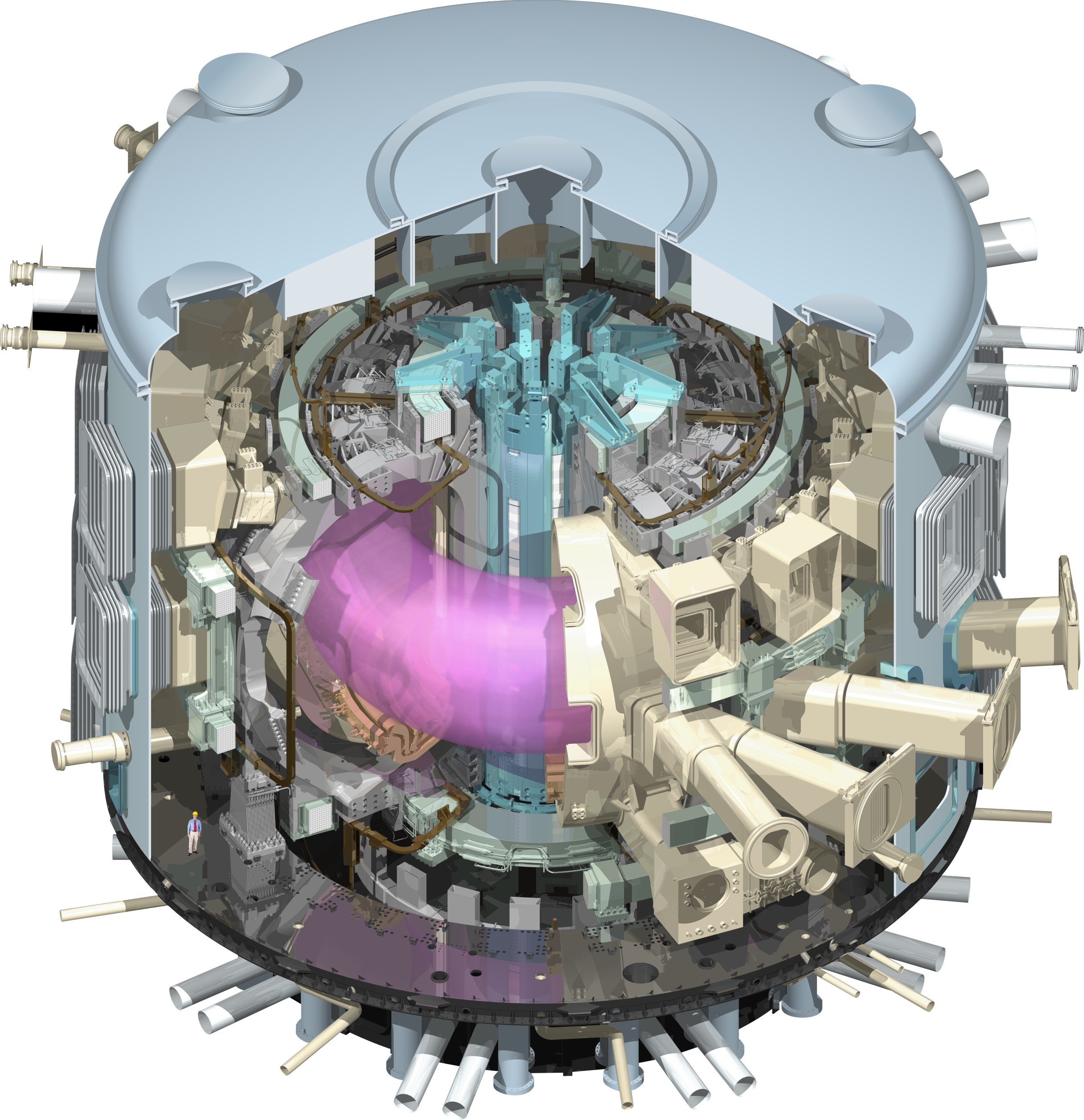
All of this heating and magnetic control requires its own energy input, and this is where the current state of fusion energy development is focused. The ratio of energy used and energy produced is called “Q”, the desired amount aimed for by scientists in the field being 10:1. When ten times the energy is produced by nuclear fusion than used to produce it, it will have advanced to a level ready for further development as an alternative power source, or so goes the thinking. ITER’s specific goal is to produce 500 MW of fusion power from 50 MW of heating power.
Once energy is released from the fusion process, it can then be captured to create steam to power generators currently using other power sources such as coal and natural gas. This is another benefit purported benefit of fusion power; it can plug directly into existing power grids, minimizing any disruptions or requirements for new equipment. Combined with the abundant availability of hydrogen and the lack of greenhouses gases or radioactive waste, there are high hopes for fusion’s future as an all-in-one energy solution.

Cybertruck
Tesla updates Cybertruck owners on timeline of massive feature yet to ship

Tesla is updating Cybertruck owners on its timeline of a massive feature that has yet to ship: Powershare with Powerwall.
Powershare is a bidirectional charging feature exclusive to Cybertruck, which allows the vehicle’s battery to act as a portable power source for homes, appliances, tools, other EVs, and more. It was announced in late 2023 as part of Tesla’s push into vehicle-to-everything energy sharing, and acting as a giant portable charger is the main advantage, as it can provide backup power during outages.
Cybertruck’s Powershare system supports both vehicle-to-load (V2L) and vehicle-to-home (V2H), making it flexible and well-rounded for a variety of applications.
However, even though the feature was promised with Cybertruck, it has yet to be shipped to vehicles. Tesla communicated with owners through email recently regarding Powershare with Powerwall, which essentially has the pickup act as an extended battery.
Powerwall discharge would be prioritized before tapping into the truck’s larger pack.
However, Tesla is still working on getting the feature out to owners, an email said:
“We’re writing to let you know that the Powershare with Powerwall feature is still in development and is now scheduled for release in mid-2026.
This new release date gives us additional time to design and test this feature, ensuring its ability to communicate and optimize energy sharing between your vehicle and many configurations and generations of Powerwall. We are also using this time to develop additional Powershare features that will help us continue to accelerate the world’s transition to sustainable energy.”
Owners have expressed some real disappointment in Tesla’s continuous delays in releasing the feature, as it was expected to be released by late 2024, but now has been pushed back several times to mid-2026, according to the email.
Foundation Series Cybertruck buyers paid extra, expecting the feature to be rolled out with their vehicle upon pickup.
Cybertruck’s Lead Engineer, Wes Morrill, even commented on the holdup:
As a Cybertruck owner who also has Powerwall, I empathize with the disappointed comments.
To their credit, the team has delivered powershare functionality to Cybertruck customers who otherwise have no backup with development of the powershare gateway. As well as those with solar…
— Wes (@wmorrill3) December 12, 2025
He said that “it turned out to be much harder than anticipated to make powershare work seamlessly with existing Powerwalls through existing wall connectors. Two grid-forming devices need to negotiate who will form and who will follow, depending on the state of charge of each, and they need to do this without a network and through multiple generations of hardware, and test and validate this process through rigorous certifications to ensure grid safety.”
It’s nice to see the transparency, but it is justified for some Cybertruck owners to feel like they’ve been bait-and-switched.
News
Tesla’s northernmost Supercharger in North America opens

Tesla has opened its northernmost Supercharger in Fairbanks, Alaska, with eight V4 stalls located in one of the most frigid cities in the U.S.
Located just 196 miles from the Arctic Circle, Fairbanks’s average temperature for the week was around -12 degrees Fahrenheit. However, there are plenty of Tesla owners in Alaska who have been waiting for more charging options out in public.
There are only 36 total Supercharger stalls in Alaska, despite being the largest state in the U.S.
Eight Superchargers were added to Fairbanks, which will eventually be a 48-stall station. Tesla announced its activation today:
North America’s northernmost Supercharger Fairbanks, AK (8 stalls) opened to public. https://t.co/M4l04DZ6B5 pic.twitter.com/zyL6bDuA93
— Tesla Charging (@TeslaCharging) December 12, 2025
The base price per kWh is $0.43 at the Fairbanks Supercharger. Thanks to its V4 capabilities, it can charge at speeds up to 325 kW.
Despite being the northernmost Supercharger in North America, it is not even in the Top 5 northernmost Superchargers globally, because Alaska is south of Norway. The northernmost Supercharger is in Honningsvåg, Norway. All of the Top 5 are in the Scandanavian country.
Tesla’s Supercharger expansion in 2025 has been impressive, and although it experienced some early-quarter slowdowns due to V3-to-V4 hardware transitions, it has been the company’s strongest year for deployments.
🚨🚨 Tesla Supercharging had a HUGE year, and they deserve to be recognized.
🍔 Opened Tesla Diner, a drive-in movie theater with awesome, Chef-curated cuisine
🔌 Gave access to Superchargers to several EV makers, including Hyundai, Genesis, Mercedes-Benz, Kia, Lucid, Toyota,… pic.twitter.com/yYT2QEbqoW
— TESLARATI (@Teslarati) December 10, 2025
Through the three quarters of 2025, the company has added 7,753 stations and 73,817 stalls across the world, a 16 percent increase in stations and an 18 percent increase in stalls compared to last year.
Tesla is on track to add over 12,000 stalls for the full year, achieving an average of one new stall every hour, an impressive statistic.
Recently, the company wrapped up construction at its Supercharger Oasis in Lost Hills, California, a 168-stall Supercharger that Tesla Solar Panels completely power. It is the largest Supercharger in the world.
News
Tesla shocks with latest Robotaxi testing move
Why Tesla has chosen to use a couple of Model S units must have a reason; the company is calculated in its engineering and data collection efforts, so this is definitely more than “we just felt like giving our drivers a change of scenery.”

Tesla Model S vehicles were spotted performing validation testing with LiDAR rigs in California today, a pretty big switch-up compared to what we are used to seeing on the roads.
Tesla utilizes the Model Y crossover for its Robotaxi fleet. It is adequately sized, the most popular vehicle in its lineup, and is suitable for a wide variety of applications. It provides enough luxury for a single rider, but enough room for several passengers, if needed.
However, the testing has seemingly expanded to one of Tesla’s premium flagship offerings, as the Model S was spotted with the validation equipment that is seen entirely with Model Y vehicles. We have written several articles on Robotaxi testing mules being spotted across the United States, but this is a first:
🚨 Tesla is using Model S vehicles fitted with LiDAR rigs to validate FSD and Robotaxi, differing from the Model Ys that it uses typically
Those Model Y vehicles have been on the East Coast for some time. These Model S cars were spotted in California https://t.co/CN9Bw5Wma8 pic.twitter.com/UE55hx5mdd
— TESLARATI (@Teslarati) December 11, 2025
Why Tesla has chosen to use a couple of Model S units must have a reason; the company is calculated in its engineering and data collection efforts, so this is definitely more than “we just felt like giving our drivers a change of scenery.”
It seems to hint that Tesla could add a premium, more luxury offering to its Robotaxi platform eventually. Think about it: Uber has Uber Black, Lyft has Lyft Black. These vehicles and services are associated with a more premium cost as they combine luxury models with more catered transportation options.
Tesla could be testing the waters here, and it could be thinking of adding the Model S to its fleet of ride-hailing vehicles.
Reluctant to remove the Model S from its production plans completely despite its low volume contributions to the overall mission of transitioning the world to sustainable energy, the flagship sedan has always meant something. CEO Elon Musk referred to it, along with its sibling Model X, as continuing on production lines due to “sentimental reasons.”
However, its purpose might have been expanded to justify keeping it around, and why not? It is a cozy, premium offering, and it would be great for those who want a little more luxury and are willing to pay a few extra dollars.
Of course, none of this is even close to confirmed. However, it is reasonable to speculate that the Model S could be a potential addition to the Robotaxi fleet. It’s capable of all the same things the Model Y is, but with more luxuriousness, and it could be the perfect addition to the futuristic fleet.
